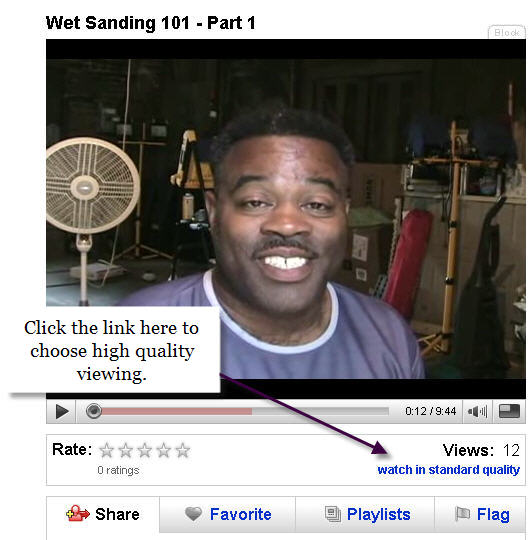March 15, 2009
You’ve asked for it, The Junkman delivers!
First off, let me say that everything I’ve learned about wet sanding was developed by reading a bazillion articles on the Internet, practicing on my daily driver, and screwing up my Corvette once (very costly mistake I might add). With that said, I want to make sure that you understand that I am by no means an expert at this. However, I am able to save myself hundreds of dollars by repairing damage to my ride that you would normally have to pay a skilled detail individual to do. What you will see in the following videos is a successful attempt at removing a scratch that was too deep to remove with a buffer and compound.
There are 2 resources that I used heavily to research this practice. One is Kleen Car Auto Appearance, which is a car detailing site that sells video how to’s on car detailing, as well as offers classes on the same topic. The other is Mobile Works which also has a lot of information on this topic.
Now, before you even think about taking these extreme measures to repair damage to your car, there is one tool that is required to do this correctly, and there is some very important information you need to have BEFORE you start. The tool you must have is a paint thickness gauge. A good paint thickness gauge will measure the amount of clear coat AND paint that is on the car. The Corvette being fiberglass requires a paint thickness gauge capable of taking readings off of fiberglass. Without this, you are just guessing when you wet sand. If you don’t know what you’re doing and you start guessing on your Vette, you’ll probably end up at a paint booth near you, spending some dead presidents to fix your screw-up. Thus, you should never practice on your pride and joy. Use your wife’s hooptie or your girlfriends clunker to get good at this and then move up to your Vette. I’ve been practicing this for a year now and I still am VERY careful when fooling with my Vette.
GM has a set standard with how much clear and how much paint they put on a car. I don’t know what that standard is but once you have your car painted, that changes of course. So if you do decide to get your ride painted, you may want to find out what that ratio is from the person who is painting your car. I’m sure you can ask a GM engineer what their ratio is.
I don’t want to duplicate a lot of the reading that you will end up doing if you follow the links that I’ve provided so I’ll just post the videos. Remember, you must utilize the links that I have provided in conjunction with the essential tools needed in order to be successful at this. Do not do as I do, do as I say! One wrong stroke of the sandpaper can be catastrophic for your paint job! If you decide to do this, know that you do so at your own risk and I assume no responsibility for your inexperience. This is something that is best left to a experienced individual, or to those who just have money to burn! I am neither, just ballsy.
Here’s the videos:
(Be sure and choose the "high quality" link so that you can see the process in very good detail, and my ugly mug in all its glory... ;) )

Video: Part 1: Wet Sanding
Video: Part 2: Final Wet Sanding & Compounding
Video: Part 3: Final Compounding and Conclusion
Here’s some before and after pictures of another area that I was working on. The scratches were on the rear quarter and near the top of the door handle. The after pictures are just after I used the fine cut cleaner. There is no polish on the car yet.
Picture 1
Picture 2
Picture 3
Picture 4
The Junkman